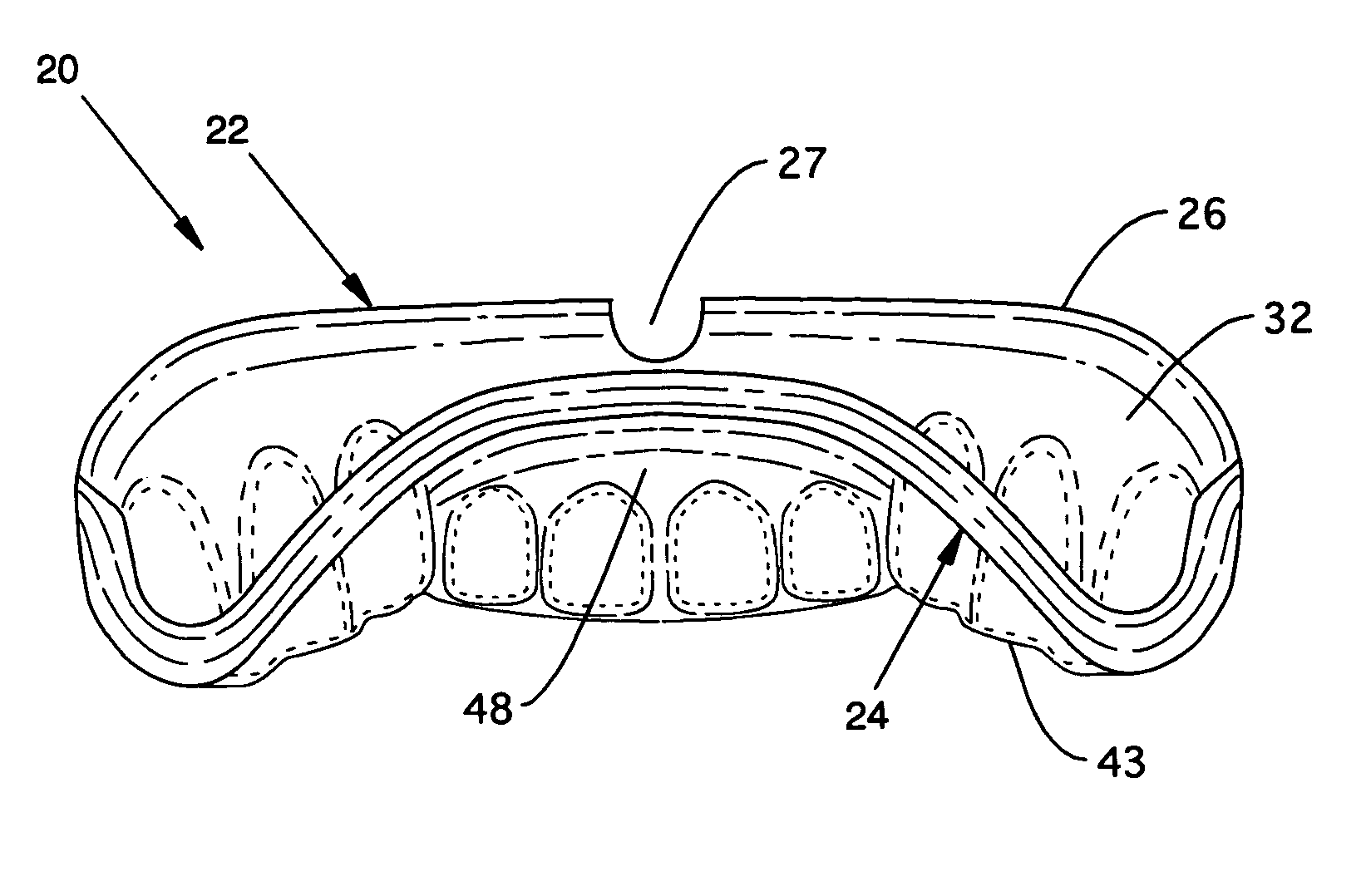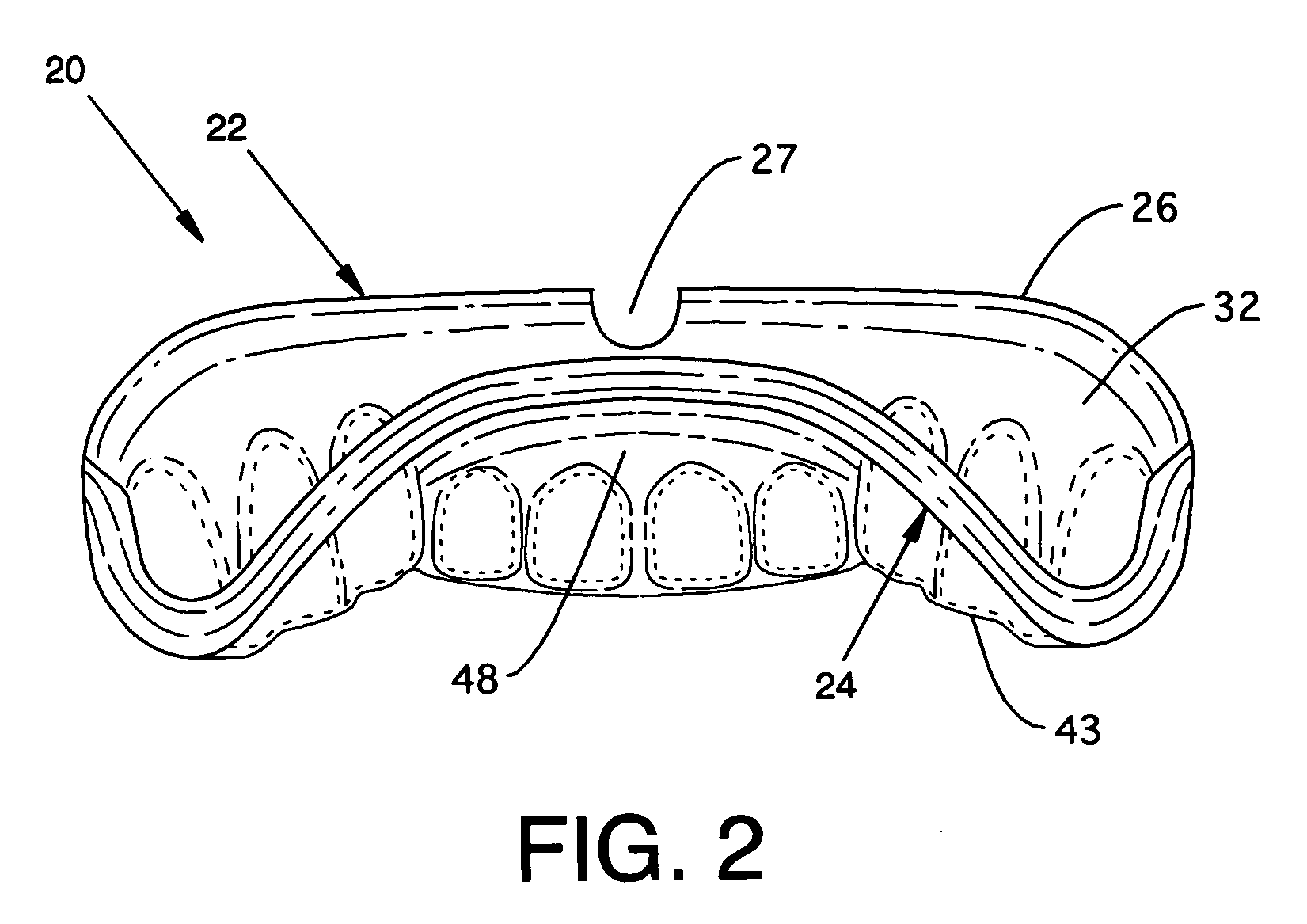Custom mouthguard
a mouthguard and custom technology, applied in the field of protective equipment, can solve the problems of degrading or preventing known mouthguards are often subjectively considered detrimental to dangers remain, so as to improve the retention, and improve the appearance of wearers. the effect of speech
- Summary
- Abstract
- Description
- Claims
- Application Information
AI Technical Summary
Benefits of technology
Problems solved by technology
Method used
Image
Examples
Embodiment Construction
[0033] In a first embodiment, the present invention is a mouthguard 20, as shown in FIG. 1. The mouthguard 20 includes an anterior portion or wall 22 and a posterior portion or wall 24. The anterior wall 22 has an upper edge or extent 26 and a lower portion 28. A slight dip or notch 27 is centered on the upper extent 26 of anterior wall 22. The notch 27 accommodates the frenum (or frenulum) of the wearer, thereby allowing portions of the anterior wall 22 to reach higher on the gum 60 (as shown in FIG. 3). The anterior wall 22 has a curved shape and is adapted and custom fit and shaped for close conformance to the forward surfaces of the maxillary anterior teeth and gingival tissue of a wearer of the mouthguard 20. In particular, the anterior wall 22 has an inwardly directed surface 32 (perhaps best viewed in FIG. 2) which is adapted and shaped to contact the forward surfaces of the wearer's anterior teeth and gingiva and gums. The anterior wall 22 also has an outwardly directed surf...
PUM
 Login to View More
Login to View More Abstract
Description
Claims
Application Information
 Login to View More
Login to View More - R&D
- Intellectual Property
- Life Sciences
- Materials
- Tech Scout
- Unparalleled Data Quality
- Higher Quality Content
- 60% Fewer Hallucinations
Browse by: Latest US Patents, China's latest patents, Technical Efficacy Thesaurus, Application Domain, Technology Topic, Popular Technical Reports.
© 2025 PatSnap. All rights reserved.Legal|Privacy policy|Modern Slavery Act Transparency Statement|Sitemap|About US| Contact US: help@patsnap.com



